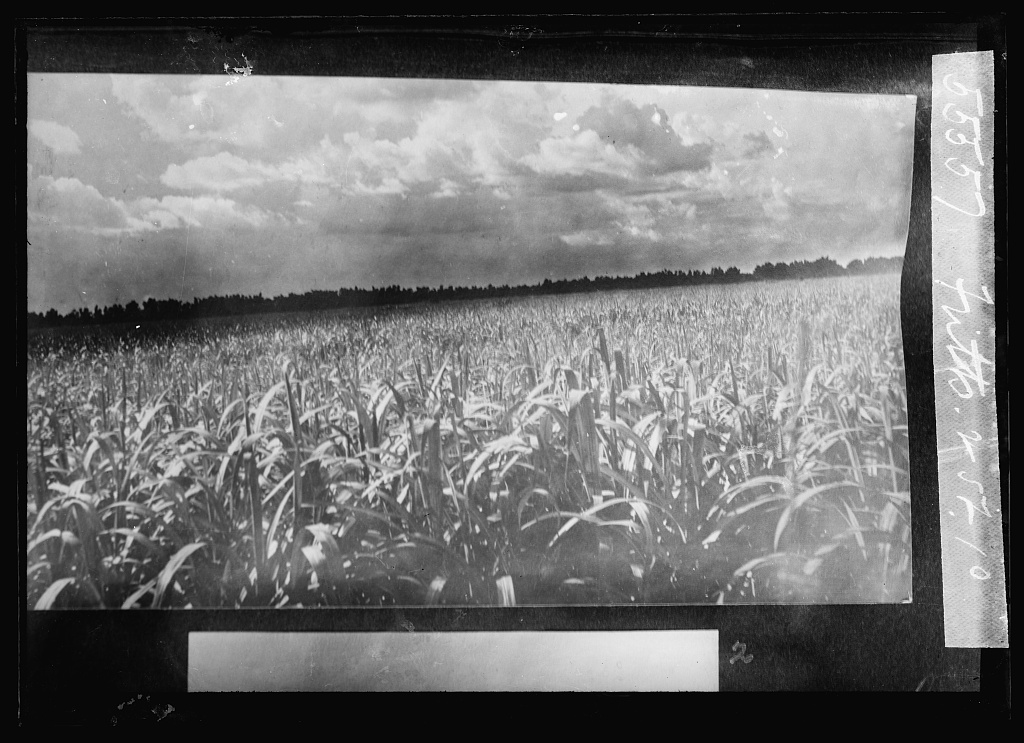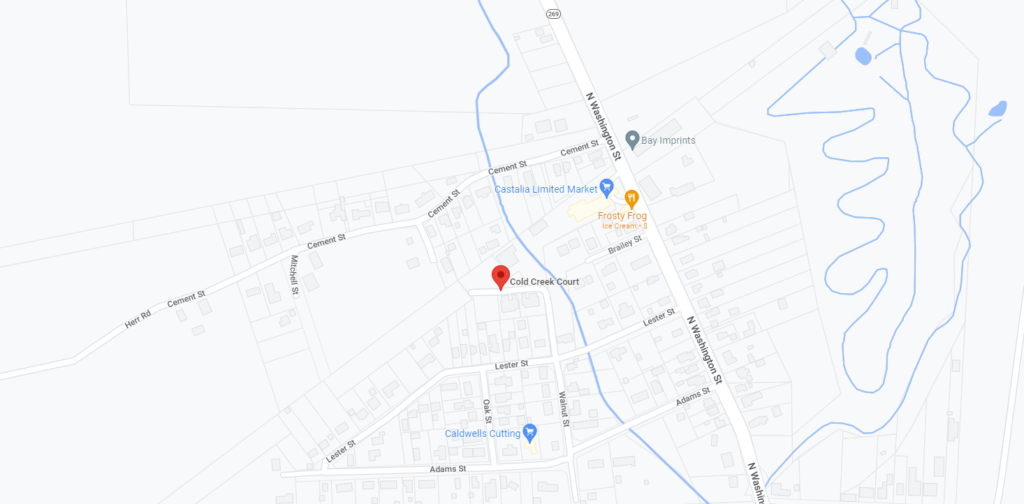
Wells Waite Miller Context and a Note
This post is connected to the life of forgotten Civil War hero Wells Waite Miller. There’s more information about the connection at the end of this post and in the subsequent one. Note that these recounted stories are from the perspective of how the white settlers were affected, and they clearly were. To round out the subject, I’ve included videos about Native American history in the area, including how they wanted to protect the land of their forefathers and foremothers.
Tragedy in Castalia Settlement
On a date not named in the History of the Western Reserve (other than a mention of it being the same spring as Semo’s death, which appears to be after the War of 1812 began), the three white men (Snow, Putnam, and Butler) headed off to a spot about a mile away to work in a corn field, according to Upton and Cutler, “not anticipating any trouble.” Once the men were out of sight, the vengeful natives, the story goes, went to the cabins where the women and children were located, and “Escape was impossible and resistance useless.”
One settler boy “crawled into the tall grass by the fence like a quail” but was captured. Mrs. Snow was in a “delicate condition” and was easily caught. Here, the tale takes a terrible turn with Mrs. Snow and three or four children of hers being “butchered on the spot.” The natives captured the rest of the women and children and took them to Malden, Canada. A few months after, they were released or purchased “by the whites.”

Also Called the Snow Massacre
The Margaretta Township website has an “Author Unknown” accounting of this tragedy. In this version, a “general stampede” first occurred as white men left their property even though they’d already planted their crops. Why? “Indians made this a general headquarters.” Rev. Badger apparently tried to keep peace in his role as missionary to the Wyandot tribe and was credited for his ability in “keeping these savages from taking sides against us in the War of 1812.”
In 1813, only three houses existed in Cold Creek (Castalia), owned by the three men named in the first accounting shared here. On June 2 of that year, sixteen natives landed in the area on a “war excursion” and then “slyly” waited for the right moment to act. The story then largely dovetails with the one by Upton and Cutler although wheat is mentioned rather than corn. The men were working in fields away from the house with the women and children in Mrs. Snow’s house. In this text, Mrs. Snow is “sick” rather than being “delicate” (with the latter possibly meaning “pregnant”).
In this retelling, the natives roughly seized the three women and asked them if they would go with them. They agreed although it doesn’t sound like they had any real choice. The children were also captured with two boys killed and scalped and a little girl murdered. Mrs. Snow was also slaughtered. The natives plundered homes, broke crockery, made a “pack load of their booty” and more. By the time the three men returned, all of the women and children were either dead or missing. Natives took their captives to Detroit and turned them over to a British man. The following fall, they were safely returned.
More Brutal Details
In a brief history about Castalia published on Touring Ohio, most of the white community had fled the area after a series of attacks by natives. Besides the three families noted in the accounts, there were “two bachelors farming the area.” In sum, there were 29 people (men, women, and children) in this settlement.
In this recounting, sixteen natives came up a waterway to capture Americans because the British in Detroit would pay for scalps and hostages. This rest of this version largely matches the one from the Margaretta Township website except that, during the three-day trip to Detroit, most of the children, one by one, would be “killed, scalped and mutilated.” While some of the natives would prepare food, others stretched and dried the scalps. By the time the survivors reached Detroit, they were eight in number.
In this version, one child had escaped the massacre and found his way to the three men who were planting crops. Then, in September 1813, the hostages were freed and the three men traveled to Detroit to bring them back home.
The History Junkie: Cold Creek Massacre
This accounting gives us a few more details. Mr. Snow, we learn, was named Dorastus Pliny or D.P. Snow. He was the son of Warren Snow, a New Hampshire pioneer, directly descended from a Puritan who came to the Massachusetts Bay Colony. (The ancestors of Wells Waite Miller, the main subject of this history series, also were Puritans who migrated to Massachusetts.) D.P. Snow had married a woman named Hannah (the “Mrs. Snow” of these narratives) and, together, they had eight children. Some survived, this article shares, to eventually continue westward to settle Missouri and then to California. D.P. Snow, we learn, was strong and multi-skilled. He built Castalia’s first structure, a mill.
The History Junkie combines two key elements, tying them together. The writer shares that Snow had been “capturing” the natives who would attempt to steal from the mill while also mentioning the War of 1812 and its role in the story. Listed as those killed were the “ill” Hannah and the Snow’s two-year-old son Robert. When the three white male settlers returned from their day in the fields, they found those two bodies. Hannah is buried in the Castalia Cemetery (where Wells Waite Miller is buried) with her Civil War veteran son, Willard, putting details of the day she died on her tombstone.
This stone lists her birth as 1765 and here is the tombstone’s inscription:
In memory of Hannah Snow
The mother of Willard & Robert Snow,
His brother who were
murdered June 12, 1813
By the British Indians
And he and two sisters
Carried prisoners to
Canada at the same time.
Because Hannah Snow would have been well into her forties at the time of her death, the likelihood that her “delicate” condition meant pregnancy is less likely although not entirely impossible.
The History Junkie states the captives were in Detroit for two years before being reunited with their family with “no more casualties.”
D.P. Snow remarried two times: to Sally Eldred who died two years after the marriage and then to Anna M. Faulk. During this third marriage, Snow had another son, Charles, before dying a few years later. Anna Snow then married Phillip Cowell with the couple having seven children.
Genealogy Site Adds Details
D.P. Snow arrived in Castalia in 1810, this site shares, with two sons and two daughters, earning the distinction of being the community’s first settler to chop down a tree. His home, located on the banks of Cold Creek, was set on 100 acres of land that he was “given.” Within the last mile of arriving to this land, he said that he’d killed 350 large yellow rattlesnakes. Another distinction of his: he fathered the first son in the community, Robert.
Snow built a log and stone gristmill from logs and quarried rock (or from rocks located nearby) with Lewis Ensign working the mill. This article includes the two varying stories of the reason for the native attack: that they’d stolen from the mill; Snow had devised a way to trap them; and then the natives wanted revenge, as well as the story of natives traveling there by river. In this retelling, 17 natives arrived and, on June 6, 1813, six of them hid in the bushes before attacking once the white men left the area. The first white settlers interred in a Castalia cemetery were the victims of the attack: Mrs. Snow, two two-year-old boys, and four-year-old Julia Butler.
The rest were given to the British in Detroit: Mrs. Mary Putnam (age 52); Mrs. Butler (age 30); Henry Gross (age 18); Hannah Page (age 14); Electa Snow (age 15); Laura Snow (age 10); Willard Snow (age 6); and Orlin Putnam (age 4). Snow married Anna Faulk on November 1, 1818 and his will was recorded in Huron County in December 1824. Huron City records show Anna marrying Phillip Cornell (not Cowell) in Margaretta Township on October 12, 1826, and the article calls their eight children “well documented.”
Wells Waite Miller Connection
In 1851, a man named Calvin Caswell bought this land and built a notable house on the grounds, the finest in the area. According to “Author Unknown,” this “farm stretches its broad acres in perfect cultivation and during the last year he has remodeled his spacious home, until it has become a palatial residence. With towers and immense piazzas, it seems more like a Saratogo hotel than a private residence.”
Wells Waite Miller later married Calvin’s daughter Mary Helen and, when Miller became dangerous wounded in Pickett’s Charge in Gettysburg, Pennsylvania on July 3, 1863 (only slightly more than fifty years after the Castalia Massacre), he recuperated in this home after being released from military medical care.
Wells Waite Miller: Exploration of His Life and Times
I’d like to share my research about Wells Waite Miller from Castalia, Ohio with you. Although I’ve written the material in the order in which I’ve found research material, I now roughly have the posts in the order in which the events occurred.
Blog posts I’ve written on the subject so far include:
- Wells Waite Miller’s America
- Thomas Miller: Ancestors in England
- Great Puritan Migration
- Scandal in the Colonies
- Calm in the Eye of the Storm
- Aaron Miller: Born Under the Drumbeats of War
- Grandparents, Parents, and Siblings
- Enfield, New York
- Ohio Bound
- Oberlin Years: Fierce Debates About Abolitionism
- Enlisting in the Civil War
- A Look at Lodowick G. Miller
- Captured: Camp Parole
- Marching Towards Gettysburg
- Picketts Charge and 43 Bonus Years
- Glory Days to Invalid Corps
- Castalia Massacre (current post)
- Calvin Caswell
- Calvin Caswell, Continued
- Obed Caswell And Walter Caswell: Story of Brothers
- Miller Family Mystery Solved?
- Miller Family Mystery Solved, Part Two
- Amos and Corinne Miller
- Oscar Schultz Kriebel, Part One
- Oscar Schultz Kriebel, Part Two
- Oscar Schultz Kriebel, Part Three
- Oscar Schultz Kriebel, Part Four
- Erie County, Ohio for Congress
- Wells Waite Miller: Republic Candidate for Ohio Governor
- Ohio Antietam Battlefield Commission
- “Speaking the Names: A Tale of Two Brothers” at Ashland University’s Black Fork Review
I invite you to become part of this journey, sharing my posts with people who enjoy reading historical biographies.
If you read this material and have additional information that’s directly tied to Miller or sets context about his life—or you’ve spotted errors—please email me at kbsagert@aol.com.